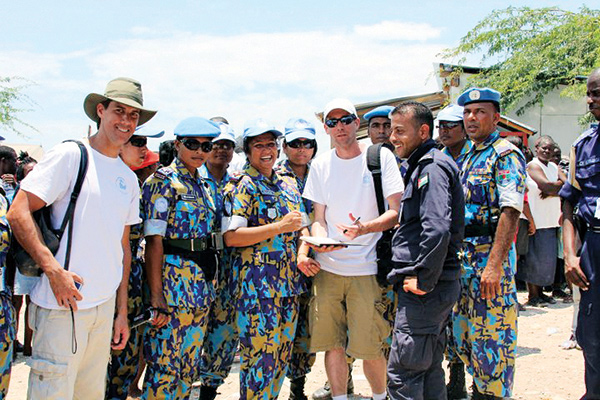What Refugees Need (It's Not Another T-Shirt)
Building better camps for displaced communities

Courtesy Greg Hodgin
Greg Hodgin 98OX 00C wants to build better refugee camps.
And his travels have convinced him the best way to do that is to listen not to nongovernmental organizations (NGOs) or government officials, but to the refugees themselves. “During our recent trip to Haiti, we saw that the camp had lots of T-shirts and tarps. That’s what the NGOs are providing, so I asked the families living there if that’s what they needed,” he says. “They said no, we need water and food distribution, and schooling for our kids.”
Hodgin, who teaches political science at Georgia State University, started the nonprofit Peacebuilding Solutions, based in Atlanta, in 2008 to improve current practices in the field—which, while well-intentioned, are often redundant or insufficient.
“Everyone assumes refugee camps are temporary—throw up a couple of tents and they’ll be on their way soon,” he says. “But just because a conflict ends doesn’t mean everyone gets to pack up their stuff and go home. That’s usually not the case, in fact.”
Considering that camps have to last years, even decades, Hodgin and his twenty-five-member team (all volunteers) wanted to invest in sturdy shelters that are easy to assemble and disassemble. “The refugees own them and can take it with them when they leave, or sell it back for start-up capital,” he says.
Even sturdier shelters for use as clinics and schools emerged from a competition Peacebuilding Solutions held in cooperation with Siemens, CH2M Hill, the Atlanta chapter of Engineers Without Borders, and Georgia Tech.
Peacebuilding Solutions is in the midst of planning its first pilot project. “These people feel like they’ve been abandoned, and in a way they have. They’ve been uprooted, their psyches have been shattered,” he says. “We want to help them to rebuild their lives on their own terms.”








